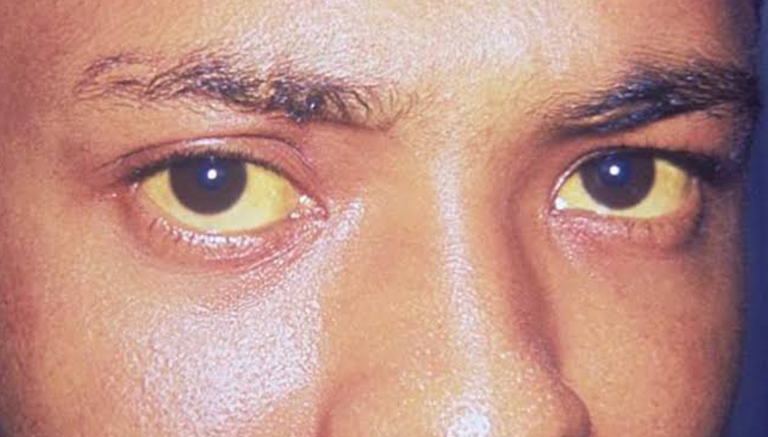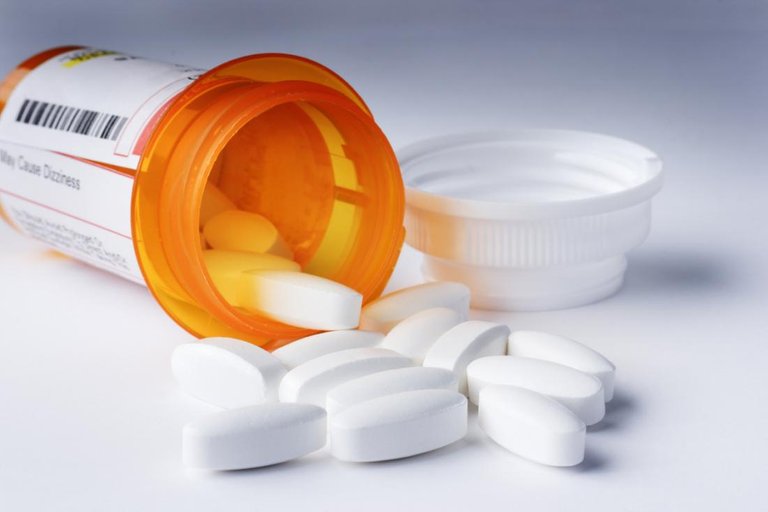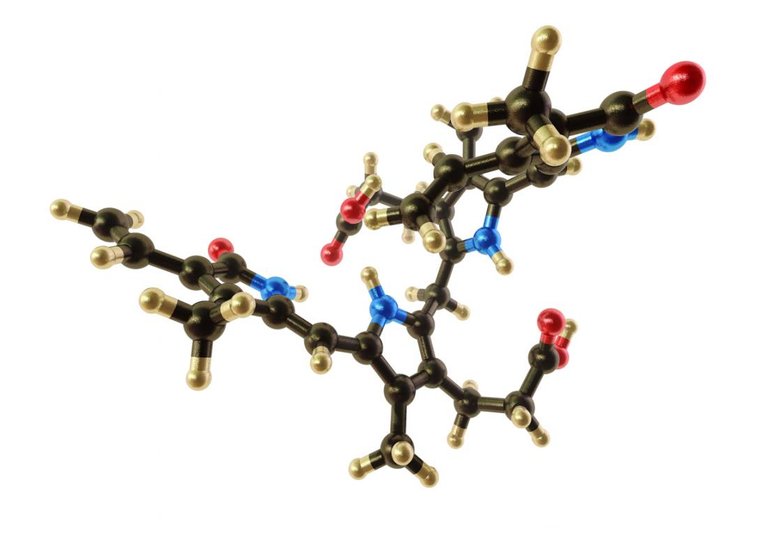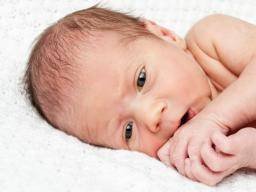
Jaundice is a term used to describe a yellowish tinge to the skin and the whites of the eye. Body fluids may also be yellow.
The color of the skin and whites of the eyes will vary depending on levels of bilirubin. Bilirubin is a waste material found in the blood. Moderate levels lead to a yellow color, while very high levels will appear brown.
About 60 percent of all infants born in the United States have jaundice. However, jaundice can happen to people of all ages and is normally the result of an underlying condition. Jaundice normally indicates a problem with the liver or bile duct.
In this article, Air-Clinic will discuss what jaundice is, why it happens, and how it is diagnosed and treated.
- Jaundice is caused by a buildup of bilirubin, a waste material, in the blood.
- An inflamed liver or obstructed bile duct can lead to jaundice, as well as other underlying conditions.
- Symptoms include a yellow tinge to the skin and whites of the eyes, dark urine, and itchiness.
- Diagnosis of jaundice can involve a range of tests.
- Jaundice is treated by managing the underlying cause.
Causes

A problem in the liver may cause jaundice.
Image credit: Doc James, 2008
Jaundice is a yellowing of the skin and the whites of eyes that happens when the body does not process bilirubin properly. This may be due to a problem in the liver.
It is also known as icterus.
Bilirubin is a yellow-colored waste material that remains in the bloodstream after iron is removed from the blood.
The liver filters waste out from the blood. When bilirubin reaches the liver, other chemicals attach to it. A substance called conjugated bilirubin results.
The liver produces bile, a digestive juice. Conjugated bilirubin enters the bile, then it leaves the body. It is this type of bilirubin that gives feces its brown color.
If there is too much bilirubin, it can leak into the surrounding tissues. This is known as hyperbilirubinemia, and it causes the yellow color in the skin and eyes.
Risk factors
Jaundice most often happens as a result of an underlying disorder that either causes the production of too much bilirubin or prevents the liver from getting rid of it. Both of these result in bilirubin being deposited in tissues.
Underlying conditions that may cause jaundice include:
- Acute inflammation of the liver: This may impair the ability of the liver to conjugate and secrete bilirubin, resulting in a buildup.
- Inflammation of the bile duct: This can prevent the secretion of bile and removal of bilirubin, causing jaundice.
- Obstruction of the bile duct: This prevents the liver from disposing of bilirubin.
- Hemolytic anemia: The production of bilirubin increases when large quantities of red blood cells are broken down.
- Gilbert's syndrome: This is an inherited condition that impairs the ability of enzymes to process the excretion of bile.
- Cholestasis: This interrupts the flow of bile from the liver. The bile containing conjugated bilirubin remains in the liver instead of being excreted.
Rarer conditions that may cause jaundice include:
- Crigler-Najjar syndrome: This is an inherited condition that impairs the specific enzyme responsible for processing bilirubin.
- Dubin-Johnson syndrome: This is an inherited form of chronic jaundice that prevents conjugated bilirubin from being secreted from of the cells of the liver.
- Pseudojaundice: This is a harmless form of jaundice. The yellowing of the skin results from an excess of beta-carotene, not from an excess of bilirubin. Pseudojaundice usually arises from eating large quantities of carrot, pumpkin, or melon.
Treatment

Treatment will depend on the underlying cause.
Jaundice treatment targets the cause rather than the jaundice symptoms.
The following treatments are used:
- Anemia-induced jaundice may be treated by boosting the amount of iron in the blood by either taking iron supplements or eating more iron-rich foods. Iron supplements are available for purchase online.
- Hepatitis-induced jaundice requires antiviral or steroid medications.
- Doctors can treat obstruction-induced jaundice by surgically removing the obstruction.
- If the jaundice has been caused by use of a medication, treatment for involves changing to an alternative medication.
Prevention
Jaundice is related to liver function. It is essential that people maintain the health of this vital organ by eating a balanced diet, exercising regularly, and not consuming more than the recommended amounts of alcohol.
Symptoms

Common symptoms of jaundice include:
- a yellow tinge to the skin and the whites of the eyes, normally starting at the head and spreading down the body
- pale stools
- dark urine
- itchiness
Accompanying symptoms of jaundice resulting from low bilirubin levels include:

Complications
The itching that accompanies jaundice can sometimes be so intense that patients have been known to scratch their skin raw, experience insomnia, or, in extreme cases, even have thoughts of suicide.
When complications happen, this is usually because of the underlying problem, not the jaundice itself.
For example, if an obstructed bile duct leads to jaundice, uncontrolled bleeding may result. This is because the blockage leads a shortage of vitamins needed for clotting.
Types
There are three main types of jaundice:
- Hepatocellular jaundice occurs as a result of liver disease or injury.
- Hemolytic jaundice occurs as a result of hemolysis, or an accelerated breakdown of red blood cells, leading to an increase in production of bilirubin.
- Obstructive jaundice occurs as a result of an obstruction in the bile duct. This prevents bilirubin from leaving the liver
Newborns
Jaundice is a common health issue in newborn infants. Around 60 percent of newborns experience jaundice, and this increases to 80 percent of premature infants born before 37 weeks of pregnancy.
They will normally show signs within 72 hours of birth.
Red blood cells in the body of an infant are frequently broken down and replaced. This causes the production of more bilirubin. Also, the livers of infants are less developed and, therefore, less effective at filtering bilirubin from the body.
Symptoms will usually resolve without treatment within 2 weeks. However, infants with extremely high bilirubin levels will require treatment with either a blood transfusion or phototherapy.
In these cases, treatment is vital as jaundice in newborns can lead to kernicterus, a very rare type of permanent brain damage.
Levels
The level of bilirubin is defined in a blood test called a bilirubin test. This measures unconjugated, or indirect, bilirubin levels. These are responsible for the onset of jaundice.
Bilirubin levels are measured in milligrams per decilitre (mg/dL). Adults and older children should have a level of between 0.3 and 0.6 mg/dL. Around 97 percent of infants born after 9 months of pregnancy have levels lower than 13 mg/dL. If they show higher levels than this, they are usually referred for further investigation.
These ranges may differ between laboratories. How far above the normal range a person's levels are will set out a course of treatment.
Diagnosis
Doctors will most likely use the history of the patient and a physical exam to diagnose jaundice and confirm bilirubin levels. They will pay close attention to the abdomen, feel for tumors, and check the firmness of the liver.
A firm liver indicates cirrhosis, or scarring of the liver. A rock-hard liver suggests cancer.
Several tests can confirm jaundice. The first is a liver function test to find out whether or not the liver is functioning properly.
If a doctor cannot find the cause, a doctor may request blood tests to check bilirubin levels and the composition of the blood. These include:
- Bilirubin tests: A high level of unconjugated bilirubin compared to levels of conjugated bilirubin suggest hemolytic jaundice.
- Full blood count (FBC), or complete blood count (CBC): This measures levels of red blood cells, white blood cells, and platelets.
- Hepatitis A, B, and C tests: This tests for a range of liver infections.
The doctor will examine the structure of the liver if they suspect an obstruction. In these cases, they will use imaging tests, including MRI, CT, and ultrasound scans.
They may also carry out an endoscopic retrograde cholangiopancreatography (ERCP). This is a procedure combining endoscopy and X-ray imaging.
A liver biopsy can check for inflammation, cirrhosis, cancer, and fatty liver. This test involves inserting a needle into the liver to obtain a tissue sample. The sample is then examined under a microscope.
Thanks for reading!
🏥💙♨
Posted from myAirClinic Healthcare App. Download Android Version from PLAYSTORE!
Very complete your explanation and description. My knowledge has increased. I will take care my liver to prevent jaundice. Thank u, my friend.